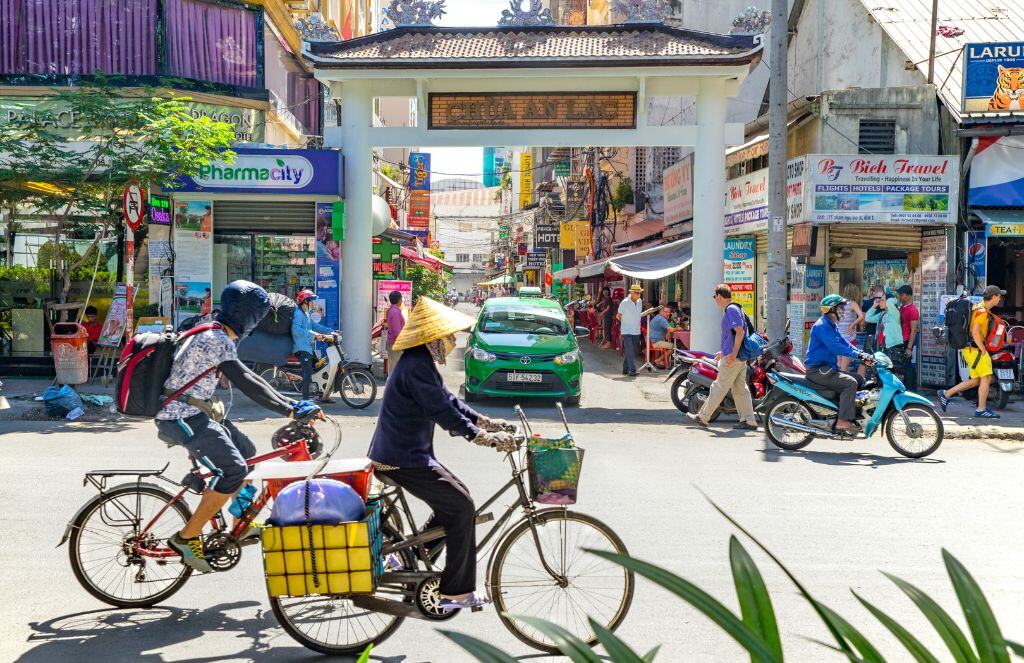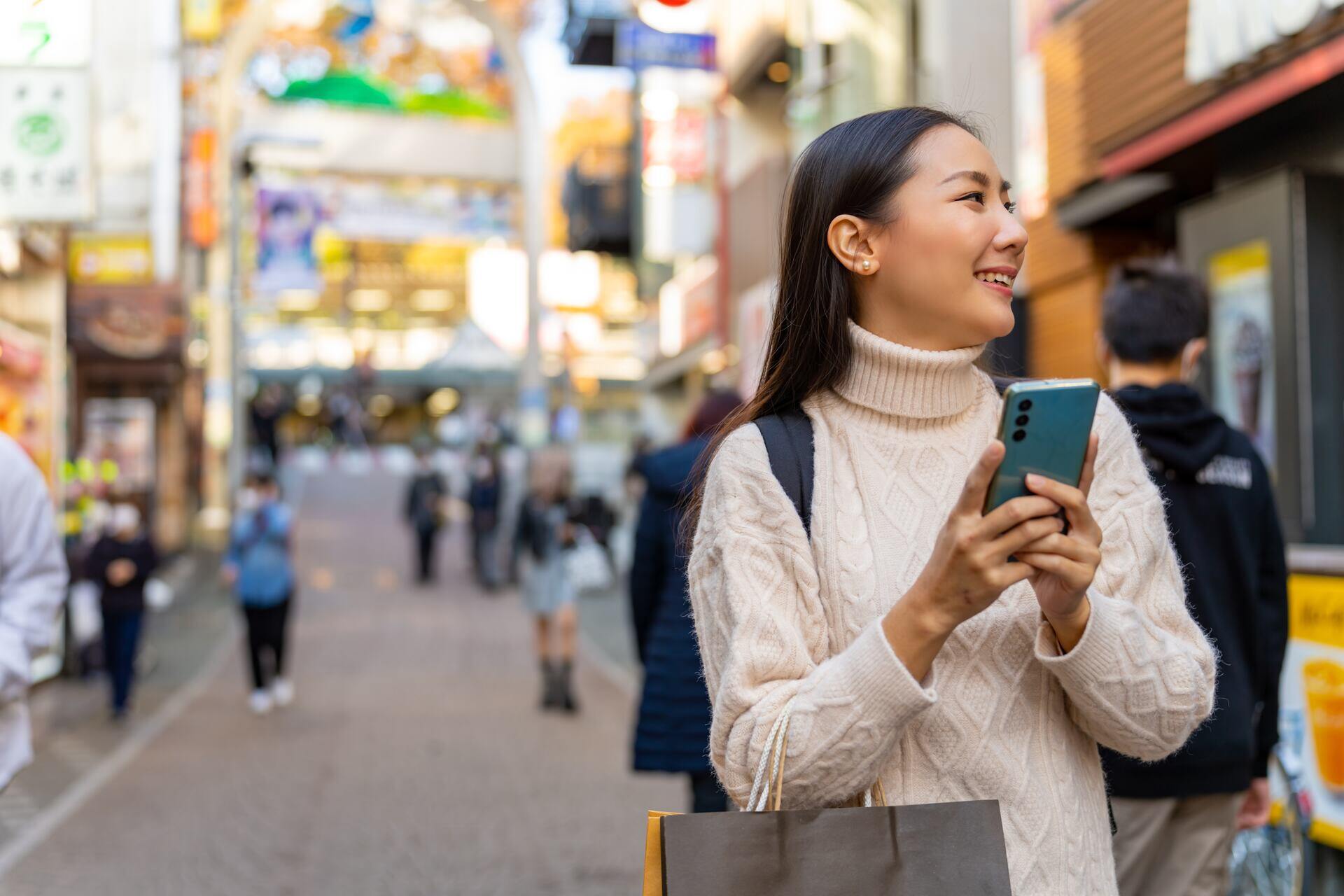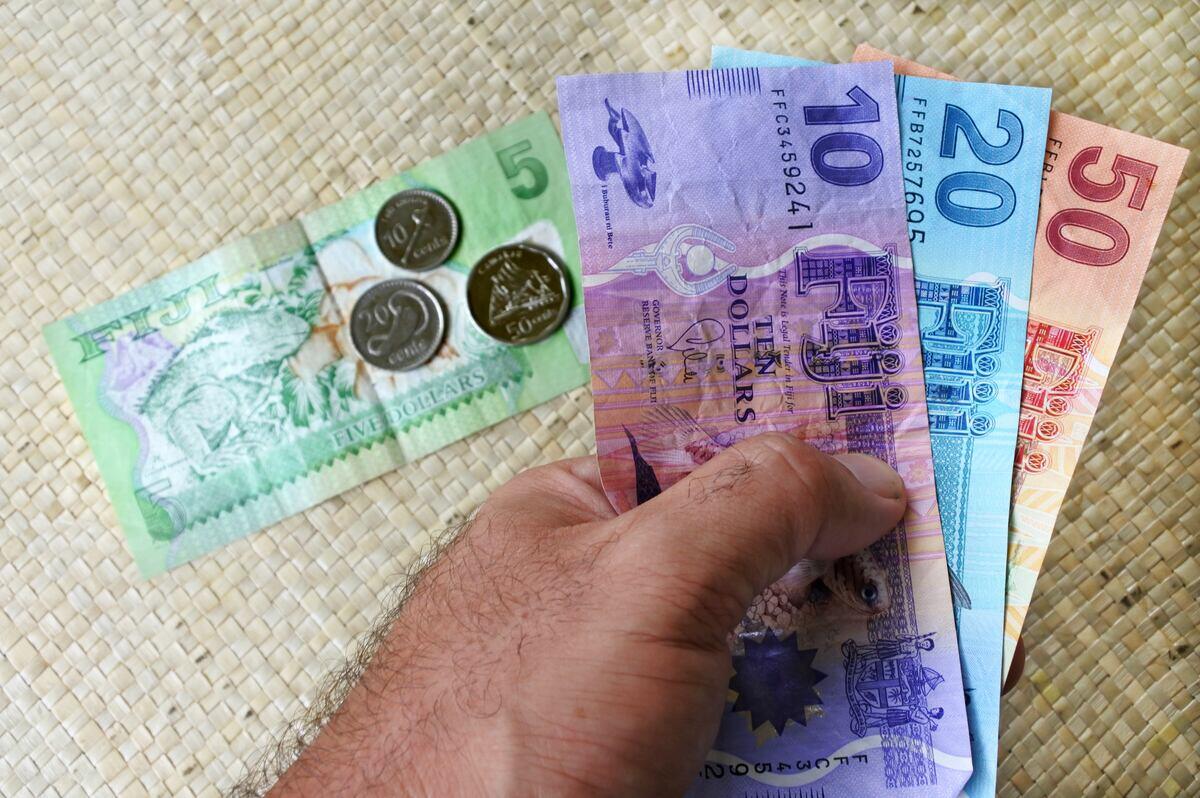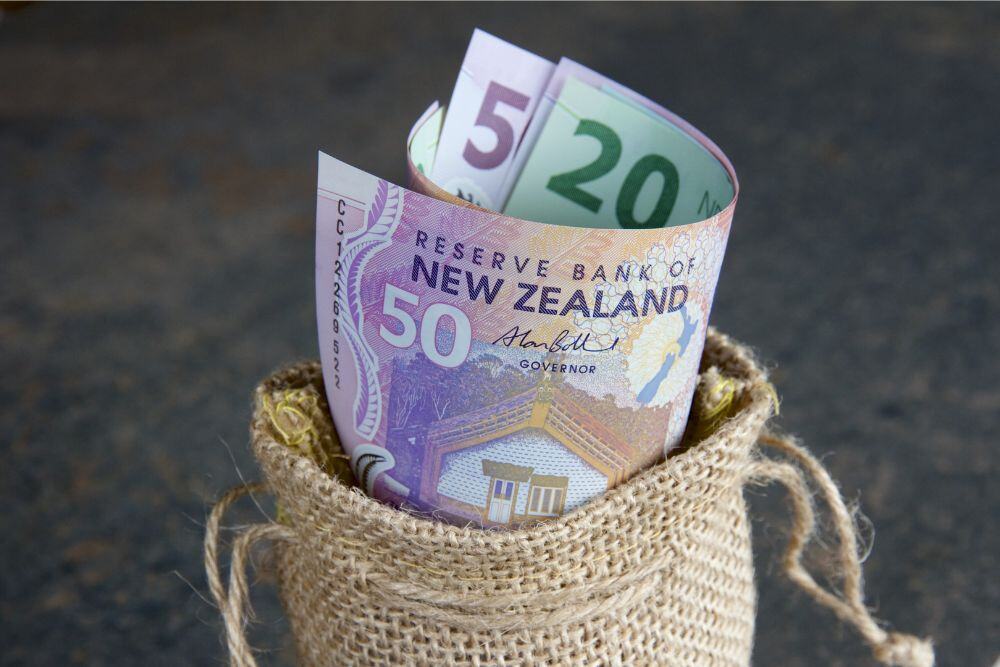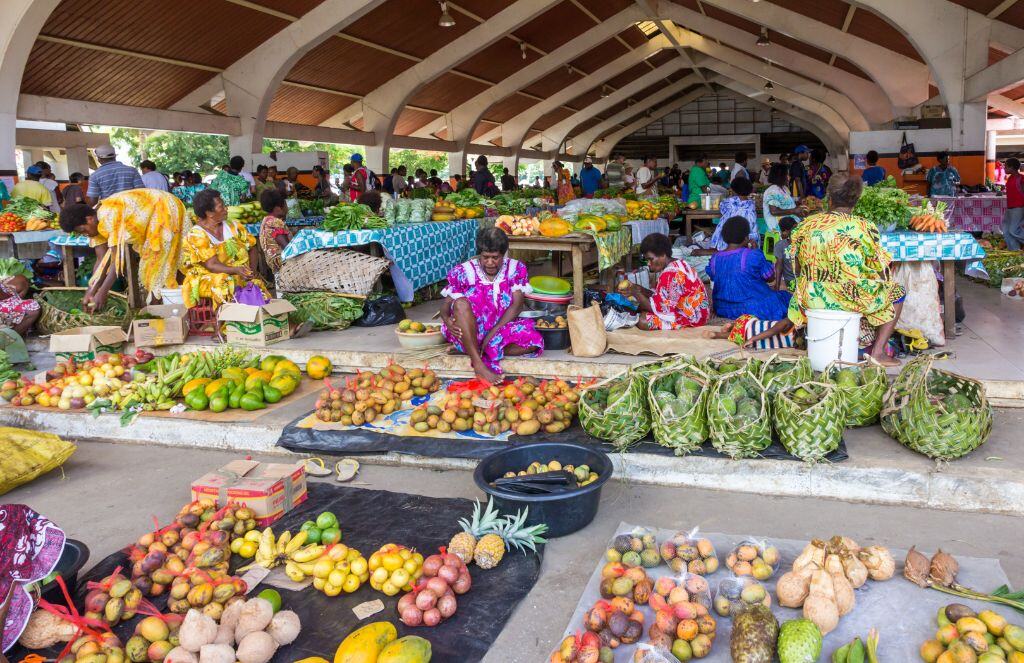What is the Best Time to Visit Japan?
With its mixture of ancient history, mysterious culture, and cutting-edge modern technology, Japan is one of the most exciting places you'll ever visit, with something for every globe trotter to explore. But what is the best time of year to visit Japan?
Here at Crown Currency Exchange, we've put together the ultimate guide to helping you decide what time of year you should visit Japan, depending on your passions and interests. Our month-by-month breakdown of events will guide you through what to see and do, helping you prepare for the trip of a lifetime.
What is the Best Time to Visit Japan for Weather?

Japan is a country with very distinct seasons, meaning there is something that can be enjoyed all year round. The summer months offer wonderful hiking weather as well as sunbathing weather on the Southern Island beaches, where average temperatures climb to 26ºC.
Come winter, the Japanese Alps offer the perfect setting and conditions for snowboarding and skiing, as well as some beautiful Instagram-post-worthy scenery. You'll need to wrap up warm though, as average winter temperatures here fall to 0ºc.
Spring weather in Japan sees pleasant temperatures of around 15ºC, although May is the rainy season, so it would be best to avoid the end of spring if you're not a fan of getting wet! Autumn is very similar to spring in temperature, albeit with a slight crisp chill in the air.
Visiting Japan in Spring (March to May)

Spring is one of the most popular times to visit Japan, with the peak cherry blossom season pulling in tourists from all over the world. The rainy season comes at the end of the season, but this is something Japan is well-prepared for, and there are plenty of indoor activities to keep you both dry and entertained.
Key Events in Spring
- Sakura Matsuri (Cherry Blossoms Festival): From late March to early April, you can see Japan's famous cherry blossoms in all their glory across the entire country. You can also take part in Hanami (flower viewing) events in many parks, where locals and tourists gather together to enjoy a picnic underneath the canopy of blossoms in full bloom.
- Beppu Hattou Onsen Matsuri: Every year on April 1st, the Beppu Hot Springs in Beppu City are home to a festival that celebrates the richness of the springs. You'll see portable shrines being carried around the shopping districts, and better yet, the springs are open to the public free of charge.
- Nikko Toshogu Shrine Annual Grand Spring Festival: Held annually on May 17th and 18th, this two-day event features spectacular highlights, including "Hyakumonozoroe Senninmusyagyoretu", which is a 1000-person strong parade dressed as samurai and aristocrats reenacting the reburial of Nikko Toshogu.
Visiting Japan in Summer (June to August)

Japan's cities, particularly Tokyo, Osaka, and Kyoto, are hot and humid in the summer months, with average temperatures of around 26ºC, and August is the hottest month, with temperatures getting as high as 35ºC.
Key Events in Summer
- Nara Yosakoi Soran Festival: During early June in Kochi, you can see teams of traditional Japanese dancers dancing to modern pop music in a festival that dates back to 1954.
- Sumida River Fireworks Festival: Dating back to the early Edo period, this festival sees over 20,000 fireworks being launched from barges on the Sumida River. It takes place on the last Saturday of July in Tokyo.
- Aomori Nebuta Festival: One of the most exciting summer festivals in Japan, the Aomori Nebuta Festival takes place in early August and sees a process of huge floats ("Nebuta") covered with images of Kabuki warriors, animals, and the Gods, as well as hundreds of traditional Japanese lanterns.
Visiting Japan in Autumn (September to November)

Autumn is one of the very best times of year to visit, with beautiful scenes of the leaves turning orange and crisp temperatures of around 15ºC. However, the start of autumn is the peak typhoon season in Japan, so it's often better to visit towards the end of the season.
The country is well prepared for typhoon season, and some don't reach the coast, but it's always best to avoid it if possible.
Key Events in Autumn
- Nagasaki Kunchi Festival: During the early days of Japan's foreign trade, both Dutch and Chinese traditions were mixed, and this had a massive impact on Japan's culture. This festival celebrates this, taking place between 7th-9th October each year with colourful floats in the shape of European ships parading through the streets.
- Kamiari Festival: In November, you can witness a parade of the Gods as this Shinto festival sees all of Japan's deities (kami-sana) assemble at the Izumo Grand Shrine to answer prayers and wishes.
- Sapporo Autumn Fest: Throughout September, a huge food festival takes place in Sapporo City with themed menus and multiple vendors offering a range of traditional dishes and drinks.
Visiting Japan in Winter (December to February)

For those who love winter scenery, Japan has all you're looking for. With snow-capped mountains and temperatures falling to an average of 0ºC, it's the ideal place to wrap up warm and enjoy outdoor sports or marvel at the snow festivals.
The metropolitan areas of Japan don't see much snowfall, but more rural areas see a regular blanket of freshly fallen snow hitting the ground, adding to their beauty and enchantment even more.
Key Events in Winter
- Omisoka: This is Japan's New Year's Eve festival and is celebrated by eating toshi koshi soba noodles that symbolise longevity and health. The head priest of Shinto shrines keeps fires burning throughout the night and performs purification ceremonies called "Ooharae".
- Schichifukujin-Moude: Annually, on the second Monday of January, the Schichifukujin (Seven Deities of Good Fortune) are enshrined throughout the grounds of Kyoto's Sennyuji temple and opened up to the public to visit.
- Sapporo Snow Festival: At the beginning of February, the Sapporo Snow Festival displays over one hundred sculptures crafted from snow and ice. These beautiful sculptures are illuminated by night as well, making for an extra special sight.
What is the Cheapest Month to Visit Japan?

While Japan has something to offer all year round, the cheapest time of year to visit is between May and June. By this time of year, the famous cherry blossom season will have passed, and you'll be slightly ahead of the bigger summer, autumn, and winter festivals.
Both flight and accommodation prices will be lower during this time of year, but you'll still be able to attend some amazing events, including the Nikko Toshogu Shrine Annual Grand Spring Festival.
Quick tip: You can make your trip to Japan even more cost-effective by buying your JPY before you leave.
What is the Best Time to Visit Japan for Events and Festivals?
Japan has something to offer all year round, with some of the most extravagant and enchanting festivals in the world. Below, you'll find our guide to what you can see each month of the year, helping you decide what time of year to visit Japan.
Key Events in January

1. Toka Ebisu Festival
From 8th-12th January each year, the Toke Ebisu Festival sees thousands of people visiting Japan's Ebisu shrines with the intention of praying for ongoing success in business. Charms and bamboo branches can be purchased to bring good luck, and you'll witness ancient rituals across the festival, including mochi pounding, kagura dancing, and the Hoekgo parade. There are plenty of food and drinks stalls to sample traditional dishes at, too.
2. Nozawa Fire Festival
Taking place in Nagano on January 15th each year, the Nozawa Fire Festival sees men between the ages of 25 and 42 defending a 2-meter high shrine from the rest of the villagers, who try to attack it with flaming torches. Perfect for thrill seekers, the purpose of the festival is to bring the village a prosperous new year by burning away bad luck.
3. Togenuki Jizoson Festival
Held in Tokyo's highly-populated Toshima region, the Togenuki Jizoson Festival sees around 100,000 people descend to the Togenuki Jizosan Koganji Temple to visit twenty priests in hopes of being blessed with good health and good luck. The busy Jizo-dori shopping street is located here too, and you'll see displays of red underwear in the shop windows, which are believed to bring good luck to those who wear them.
Key Events in February

1. Sapporo Snow Festival
One of Japan's most famous festivals, the Sapporo Snow Festival attracts over two million tourists every year and displays over a hundred sculptures crafted from snow and ice. The festival runs for a week and, as well as the incredible art on display, you'll find traditional food and drinks served in the surrounding area.
2. Mito Plum Blossom Festival
While not as well-known as Japan's cherry blossom season, the Mito Plum Blossom Festival is arguably just as beautiful and displays over 3000 plumb trees in full bloom. Held in the historical Karaikuen Garden, you'll also be able to sample plum wine, take part in traditional Japanese tea parties, and explore everything else the park has to offer.
3. Chitose-Shikotsu Hyoto Festival
Held at Lake Shikotsu, the Chitose-Shikotsu Hyoto Festival see the lake's crystal clear water pulled through sprinklers to create amazing pillars of ice, which are illuminated with coloured lights at night. There are also ice slides, taiko drumming, and a fireworks display.
Key Events in March

1. Cherry Blossom Festival
This famous festival takes place from late March to early April and sees thousands of people flocking to parks and temples with the hope of seeing the canopy of delicate flowers on bare branches.
2. Omizutori Festival
Dating back over 1200 years, the Omizutori Festival takes place in the Todaiji Temple and marks the start of spring. During the festival, the Otaimatsu torch is lit, and it is believed that sparks from the torch bring happiness and good health.
3. Mount Takao Fire Walking Festival
Looking for something to get your heart racing? Take off your shoes and socks and walk across burning coals at the Mount Takao Fire Walking Festival. Originally practised by the mountain's monks as part of their training, it is an event that is now open to the public to join in.
Key Events in April

1. Shingenko Festival
With over 1,000 people in samurai costumes parading through the streets of Kofu, the Shingenko Festival is a must-see for any fan of historic Japanese culture. You can also register to take part in a reenactment of the Battle of Kawanakajima if you're looking to fully immerse yourself in the experience.
2. Kamakura Festival
For a week in the middle of April, the Kamakura Festival in the Kanagawa Prefecture celebrates the samurai spirit with traditional dancing, horseback archery, and reenactments that depict the tragic love story of Lady Shizuka and a warlord.
3. Beppu Hatto Onsen Festival
At the start of April, the Beppu Hatto Onsen Festival sees Beppu's hot springs open to the public for free. There is also a parade and traditional dancing to enjoy as the area celebrates the clear, rich waters.
Key Events in May

1. Children's Day
Japan's 'Golden Week', takes place in May, which is a week of national holidays, and during this time, Children's Day takes place. Streamers with depictions of carp are flown all over the country, representing family members and symbolising toughness and power. The day comes with its own dish of kashiwamochi and chimaki, too.
2. Aoi Festival
Held in Kyoto, one of the most historical areas of Japan, the Aoi Festival started almost 1500 years ago and is still going strong. It takes place on May 15th each year and sees hundreds of tourists and locals gather to see the parade that features historical ceremonies and elaborate floats.
3. Tokyo Sumo Tournament
This one's for the sports lovers! From mid-May, the Tokyo Sumo Tournament celebrates the nation's historical sport with impressive displays of strength and skill from the wrestlers. As an indoor activity, it's also perfect for keeping dry during the rainy season.
Key Events in June

1. Tsukiji Lion Dance Festival
This truly spectacular festival features gigantic lion heads painted with red and gold marching through the streets of Tokyo, starting from the Namiyoke Shrine in Tsukiji. Over 360 years old, the festival tells the story of the Inaro Okami statue that was recovered from the sea and, once installed at the shrine, saw storms and deadly ocean waves calm.
2. Yoshiwara Gion Festival
Held on the second weekend of June in Fuji City, the Yoshiwara Gion Festival features 21 elaborately decorated floats being carried through downtown Fuji, drawing large crowds of over 200,000 people. There are also specialist food stalls to enjoy and taiko drumming throughout the evening.
3. Tokkawa Firefly Festival
Perfect for nature lovers, the Tokkawa Firefly Festival sees thousands of fireflies light up the sky at Okazaki City Firefly School. It takes place every weekend in June and offers educational talks on fireflies along with stunning views of the Tokkawa River by night.
Key Events in July

1. Tanabata Festival
Celebrated on July 7th each year, the Tanabata Festival tells the folklore love story of Orihime and Hikoboshi. The streets of Tokyo are filled with bamboo decorations, each of which carries a secret wish, and there are food and drink stalls to sample traditional Japanese cuisine.
2. Hakata Gion Yamakasa Festival
Looking for something you don't see every day? The Hakata Gion Yamakasa Festival, which takes place for the first two weeks of July in Fukuoka, sees loinclothed men dragging huge floats without wheels through the streets across a 5km course.
3. Fuji Rock Festival
One for music lovers, outside of the regular ski season, the Naeba Ski Resort plays host to the Fuji Rock Festival, with three days of non-stop music. You'll see a really eclectic mix of artists and genres, including pop, indie, and, of course, rock.
Key Events in August

1. Hiroshima Peace Memorial Ceremony
Whether you're a history lover or you simply want to pay your respects, the Hiroshima Peace Memorial Ceremony that takes place every August is a sobering event to attend. It's also beautiful, with lanterns floating through the Memorial Park's river, and there are educational talks on the deeper meaning of peace in Japan.
2. Awa Odori Festival
This famous festival spills out from Central Odori Park onto the streets of Tokushima City in a celebration of traditional folk dance. It attracts over one million visitors every August, so it might be one to skip if you're looking to avoid crowds. But, with its 400 year old origins, it's certainly something we'd recommend seeing.
3. Kyoto Gozan Okuribi
Marking the end of Obon, the Kyoto Gozan Okuribi is held on August 16th and is celebrated by setting gigantic characters alight on the hillsides. Higashiyama district's Daimonkiyama sees the largest of these characters, which suitably translates as "large".
Key Events in September

1. Kyushu Beer Festival
Running from September 13th - 18th, the Kyushu Beer Festival is a celebration of all things brewed. Held in Fukuoka, you'll get the opportunity to sample lagers and ales from all over Japan, and you can even buy some bottles to take home with you.
2. Mount Fuji
While not a festival, many hikers find that September offers the optimum weather and temperature to climb Mount Fuji. It's also an incredible place to see the sunrise, or if you're more of a stargazer, September's clear autumnal skies will offer unparalleled views of the heavens.
3. Japan Grand Prix
The ideal activity for speed freaks and car enthusiasts, the Japan Grand Prix takes place at the end of September and sees competitors from all over the world try to be the first to cross the line and take the chequered flag.
Key Events in October

1. Matsue Suitoro Festival
Starting in the first week of October, the Matsue Suitoro Festival features an illuminated art display across 100 streets in the Shimane Prefecture. You can explore the festival on foot or by taking a canal cruise, and if you really want to get involved, you can head to a lantern-making workshop in Matsue Castle.
2. Kanuma Autumn Festival
For one weekend every October, the Tochigi Prefecture, which is just 90 minutes away from Tokyo, holds an Autumn Festival in the town of Kanuma. One of the most famous of Japan's local festivals, artists from all over the town create 27 floats, which eventually merge to create two stages, and once connected, a battle of the bands commences!
3. Nagasaki Kunchi Festival
For over 4000 years, the Nagasaki prefecture has hosted this incredible festival, which sees the streets filled with dragon and lion floats, depicting and celebrating the mixed culture of Dutch and Chinese cultures during the Edo period.
Key Events in November

1. Kawaguchiko Autumn Leaves Festival
Giving the cherry blossom season a run for its money, the Kawaguchiko Autumn Leaves Festival features stunning views of Mount Fuji underneath crimson-leaved trees. The festival goes on until late in the evening, and there are food stalls and a market offering local specialties to sample.
2. Utsunomiya Gyoza Festival
For two days at the start of November, Utsunomiya Castle Park is home to the Gyoza Festival. Perfect for any foodies, you'll have the opportunity to eat your way through hundreds of different gyozas made by masters of the craft. You can also enjoy live music and cultural performances while you drink and dine.
3. Tokyo Skytree Illuminations
Starting from the middle of November, the famous Tokyo Skytree is adorned with festive lights to usher in the holiday season. The surrounding Skytree Town is just as festively decorated too, and the tower often has shows projected onto the side. Forget your usual Christmas light displays - this is like nothing you've seen before.
Key Events in December

1. Kobe Luminarie
From the first week of December, Kobe displays one of the most incredible light shows you'll see in Japan, with architects and electricians working together to illuminate the town with thousands of lights. Not only is it beautiful, but this display serves as a memorial for the Great Hanshin Earthquake of 1995, giving it some poignancy.
2. Chichibu Night Festival
Held in Saitama, the Chichibu Night Festival features giant illuminated floats covered with lanterns hand-pulled through the streets. There's also live music and entertainment, as well as the chance to warm up by sampling some of the area's homemade sake.
3. Jigokudani Monkey Park
Tucked away in Nagano's mountains, you'll find a hot spring that has been claimed by Japanese macaques, most commonly referred to as "snow monkeys". It's a great place to head if you're up for a winter hike, although there are accommodations nearby too, that have their own hot springs to enjoy once you're done trekking.
How Many Days Do You Need to See Japan?
With so much to see and do and with so much ground to cover across this wonderful island nation, we'd recommend visiting Japan for at least two weeks. This will give you enough time to see some of the country's most popular events, visit the bustling metropolitan areas, and spend some days in rural areas with fewer crowds when needed.
Final Thoughts
Japan really does have something for everyone, from vibrant festivals filled with colour and noise to beautiful scenic views and once-in-a-lifetime animal experiences. There's also something to do all year round, from the deepest winter to the rainy season and the hot spells in between. Remember, however, whether you choose to visit Japan to see the cherry blossoms or fall foliage, you're going to need some Yen to get around. So, find your nearest Crown Currency Exchange and talk to our team about buying JPY for your trip, with no fees or hidden costs.


